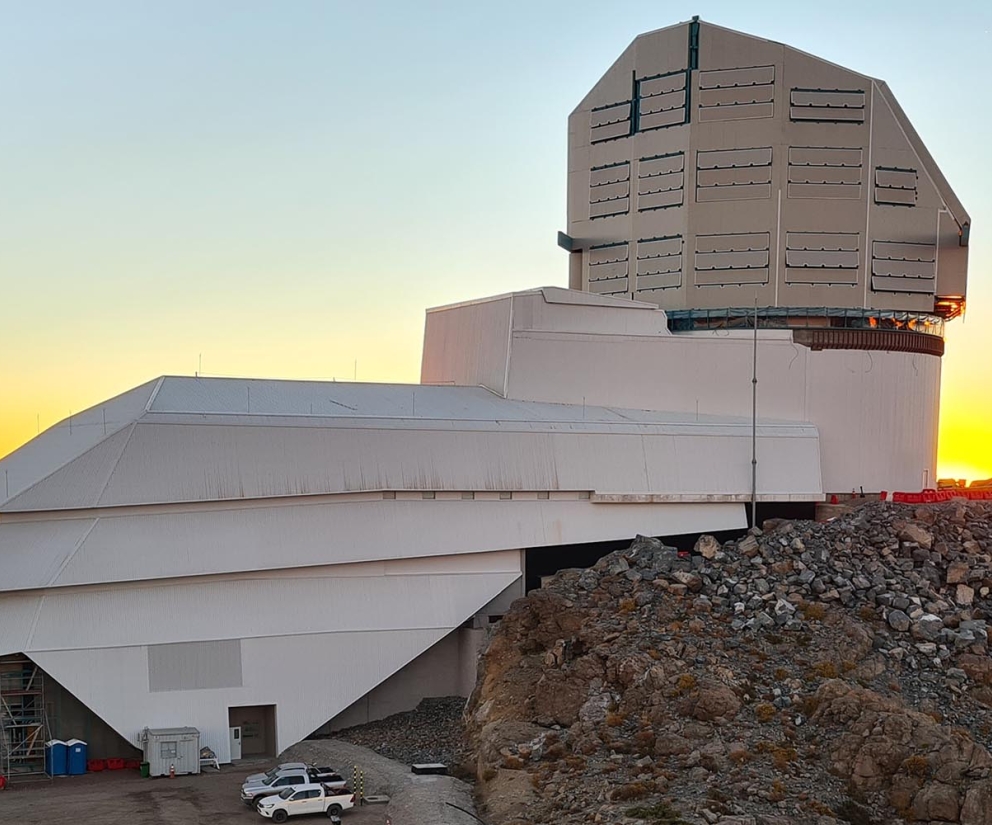Computational physics at Perimeter
Computational physics is sometimes described as using a backhoe instead of a spade – bringing computational power to problems that are just too much work to do by hand. But there is far more to computational physics than brute strength and heavy number crunching. There is an art to it – an art which physicists facing computational problems may or may not excel at. Fortunately for Perimeter researchers, the Institute has a computational artist on staff.
Erik Schnetter is a Perimeter researcher – he’s done widely respected work on the gravitational aspects of black holes – but he’s also a staff member whose mandate is to collaborate with other researchers on computationally challenging problems.
Schnetter speaks of his role as being analogous to the engineering experts that help experimentalists with their work. “When one sets up an experiment in physics, the experiment needs to be designed,” he says. “You need to know many details about how to do things. For instance, some experimental set-ups are technically feasible, and some are not, even though the physics being tested is the same. So you need experience to set up a successful experiment.”
“Computational physics is much the same,” Schnetter continues. “If you have a small problem, you can simply crunch through it – Mathematica and other off-the-shelf tools are there to help you. But for complex problems, you need to have experience and put effort into designing the computational infrastructure. You need to make sure the numerical algorithms are efficient and stable and produce good, accurate results. It’s easy to make an error with an algorithm that causes things to just explode – small errors add up across many iterations like an interest rate, like having a mortgage for a million years. No one wants that. And that’s just one of the things that can go wrong. It gets quite complicated. You need good design from the beginning.”
Schnetter works with researchers from all of Perimeter’s diverse fields of research. “That works because though the physics is very different, the computational methods are often quite similar,” he says. Often, he’s pulled in for hallway consultations and 10-minute chats, but he’s been part of a number of major projects, too. For example, he’s recently collaborated with Faculty member Luis Lehner on describing transient gravity waves, with Senior Researcher Christopher Fuchs on new approaches to probability in quantum theory, and with Faculty member Bianca Dittrich on a problem in quantum gravity.
“Most of us in quantum gravity are rather new to computational physics,” remarks Dittrich. Quantum gravity in general studies the idea that spacetime itself might be made up of small grains, like grains of sand, which cannot be divided further. Much of the work in the field involves investigating the properties of these individual grains of spacetime – they are called, confusingly, atoms of spacetime. Dittrich’s work involves how to get from those atoms of spacetime back to the smooth structure we know spacetime has on a large scale. That’s where computational physics can come in.
Dittrich sums up the problem: “We have microscopic models for quantum gravity, which describe the properties of a spacetime atom, but we don’t know much about what happens when you put many of these atoms together. It’s a very complex question because it involves lots of atoms – an infinite number of atoms – and one has to consider not just their static states, but the dynamics of them. For a long time, there’s not been much progress on this front.”
This is where computational physics can be a game-changer. Dittrich explains: “What we did was to simplify the model of individual spacetime atoms, while keeping the main dynamical ingredients. Then, we were able to do numerical simulations involving many of these simplified atoms.” This gave the researchers a glimpse of what quantum spacetime might look like on a large scale.
“It was very helpful to have Erik to collaborate with,” says Dittrich. “He suggested ways to design a computation that led to a much more effective simulation. In the end, we were very pleased with the simulation we did run: we saw something beyond what we expected, which has opened a new research direction for us.”
“Places that require heavy computing invariably have someone who tends to be the whiz on getting things done computationally,” reflects Luis Lehner, who recently worked with Schnetter on a team that described what signals might be picked up by the new generation of gravitational wave observatories. “It is unusual for the role to be formalized. And it’s very unusual to have someone who can see across many fields and disciplines in the way Erik does.”
“Computational physics is important because many fascinating, deep, fundamental problems can only be tackled computationally,” adds Lehner. There are ideas that need testing and exploring that are “outside the reach of what’s experimentally feasible,” he says. “Along with theoretical and experimental physics, computational physics is becoming a third pillar of fundamental research.”
Computational physics, then, is not so much like a backhoe as like a telescope – a new window on the universe, a tool to see further.
Further exploration
About PI
Perimeter Institute is the world’s largest research hub devoted to theoretical physics. The independent Institute was founded in 1999 to foster breakthroughs in the fundamental understanding of our universe, from the smallest particles to the entire cosmos. Research at Perimeter is motivated by the understanding that fundamental science advances human knowledge and catalyzes innovation, and that today’s theoretical physics is tomorrow’s technology. Located in the Region of Waterloo, the not-for-profit Institute is a unique public-private endeavour, including the Governments of Ontario and Canada, that enables cutting-edge research, trains the next generation of scientific pioneers, and shares the power of physics through award-winning educational outreach and public engagement.

